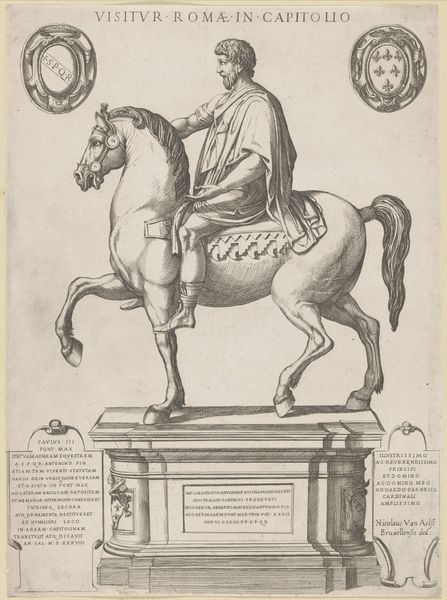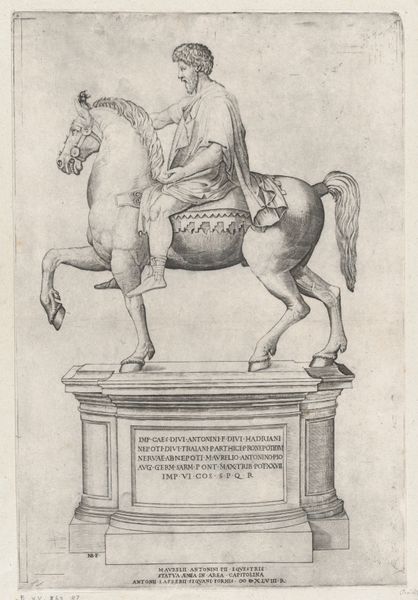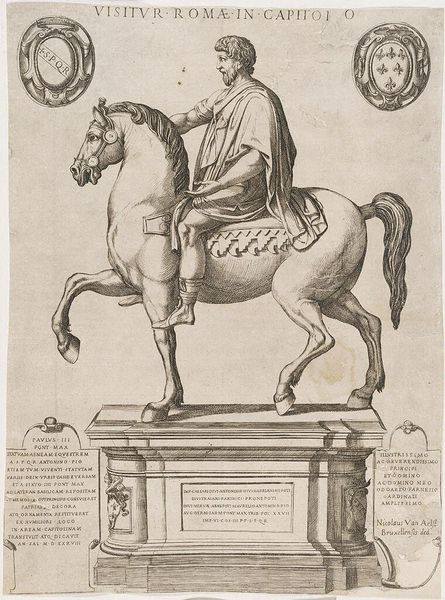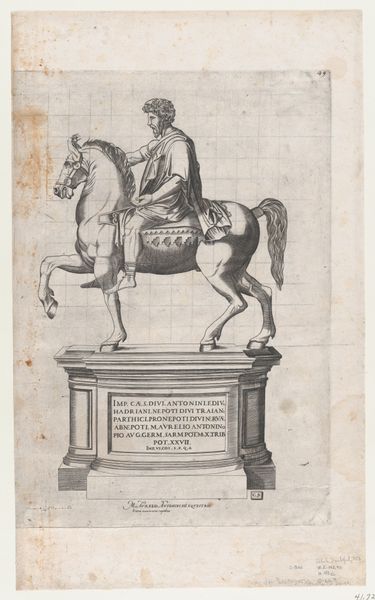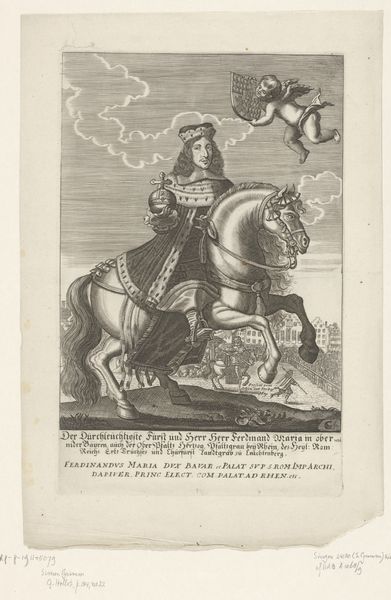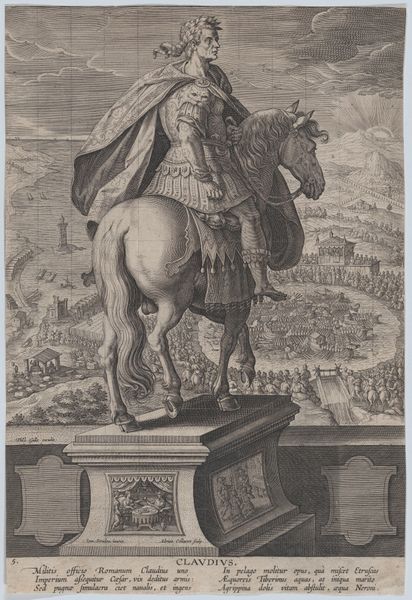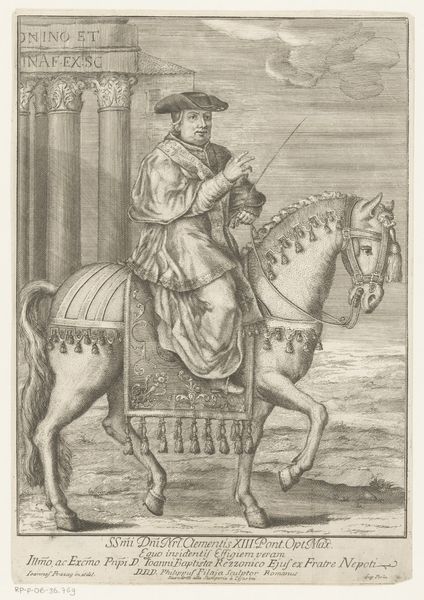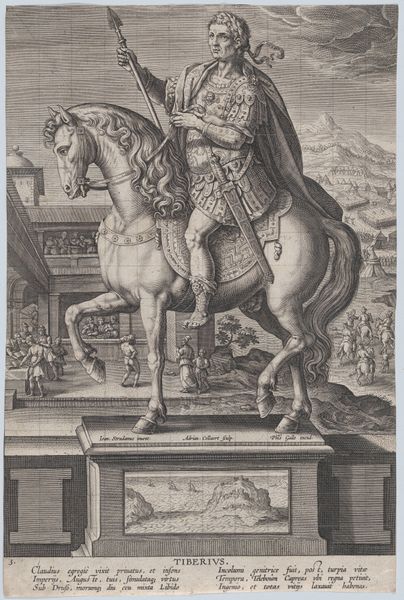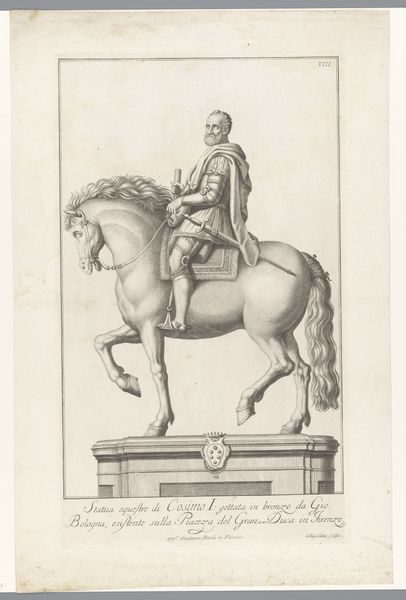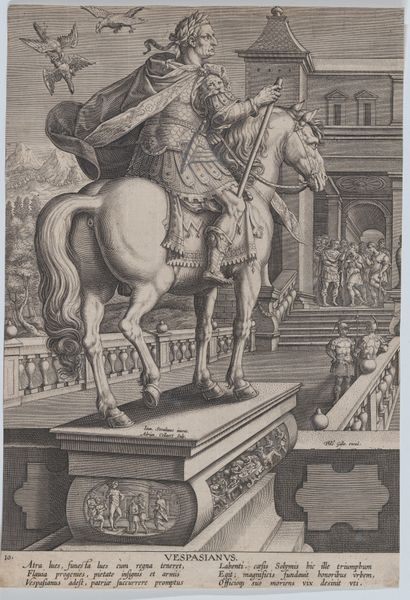
Equestrian Statue of Henry II, King of France, in the Palazzo Rucellai by Daniele de Volterra 1600 - 1607
0:00
0:00
drawing, print, engraving
#
portrait
#
drawing
#
baroque
# print
#
horse
#
cityscape
#
history-painting
#
engraving
Dimensions: sheet: 15 3/4 x 20 1/2 in. (40 x 52 cm) plate: 12 x 15 3/4 in. (30.5 x 40 cm)
Copyright: Public Domain
Curator: Right, let's talk about this print titled "Equestrian Statue of Henry II, King of France, in the Palazzo Rucellai by Daniele de Volterra," created sometime between 1600 and 1607. The artist responsible for this engraving is Antonio Tempesta, a name that evokes… well, a tempest, really. Editor: My initial gut reaction is that this feels oddly...frozen. Like a historical photograph trying to masquerade as grand spectacle, but ending up feeling static and posed. There is something about the quality of line that lends a dreamlike distance to this artwork. Curator: I agree; that static quality is a definite part of its character. And I wonder how much that comes from it being a print of a statue, twice removed from the original vitality! Tempesta’s detail is impressive, however. Look at the horse's musculature, and how he's captured the armor. Consider the inscriptions. How do they add a certain air of learned authority, a sense of placing this within a larger context of history and power? Editor: Absolutely. And there's an undeniable symbolic tension, isn't there? The king, perched atop his horse, rod in hand, surveys his realm – literally and figuratively elevated. I am looking closely at his gesture as an element of the composition. What does that signal? Is it benediction or warning? Also, there’s a strange sort of theatricality here— the sculptural relief at the base almost feels like a stage set. It does bring me back to what I initially noticed as that distancing effect. Curator: Very good points. It's theatrical in the best Baroque sense of dramatic display meant to impress and maybe overwhelm. Also consider this history of equestrian statues as assertions of power. But look, Antonio Tempesta adds his perspective by framing this figure as an object among objects, and creating space and distance to allow an observer the possibility of an informed experience. Editor: So, in a way, he's not just representing power, but also analyzing it? Almost deconstructing it through this intricate layering of image upon image? Curator: Precisely. This engraving does more than simply reproduce an existing monument; it adds layers of interpretation, transforming stone into a lively document. Editor: I will adjust my position. Initially, I considered this a picture that looked frozen, but looking closer it becomes like a tableau with movement occurring over different registers. You have offered such fascinating perspectives to unlock. Curator: And your sharp eye got us there. Thank you for taking the journey with me!
Comments
No comments
Be the first to comment and join the conversation on the ultimate creative platform.
